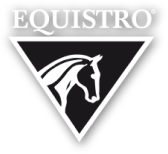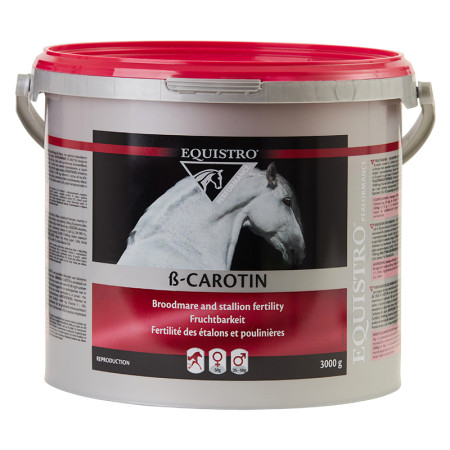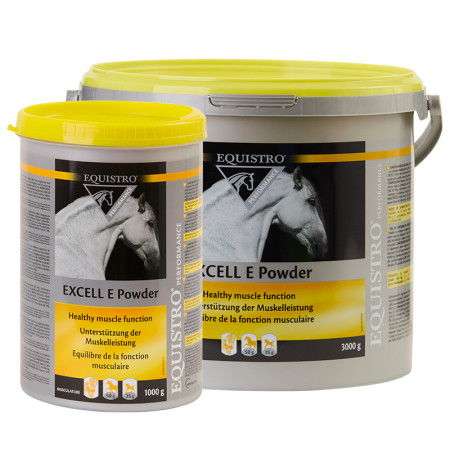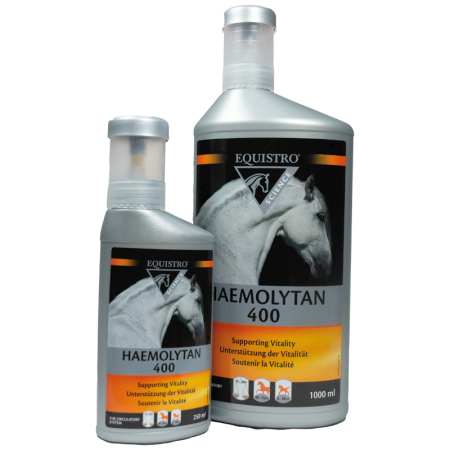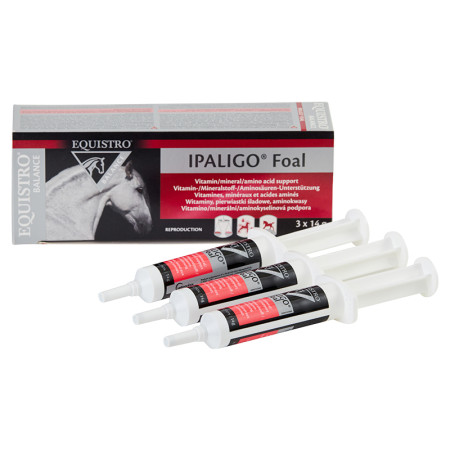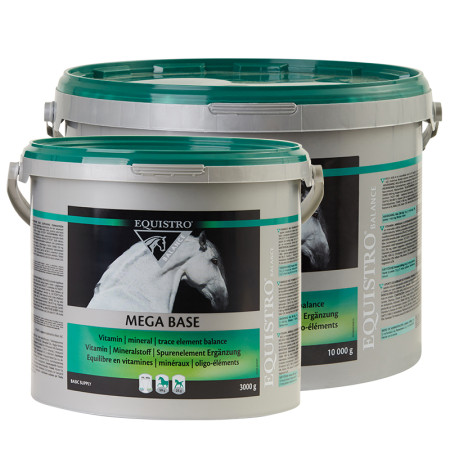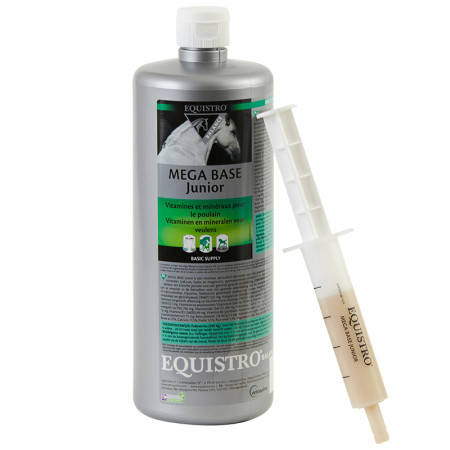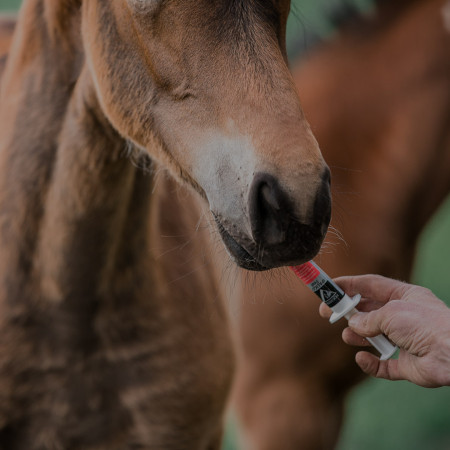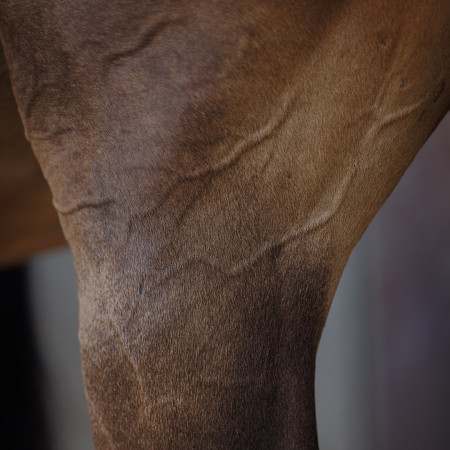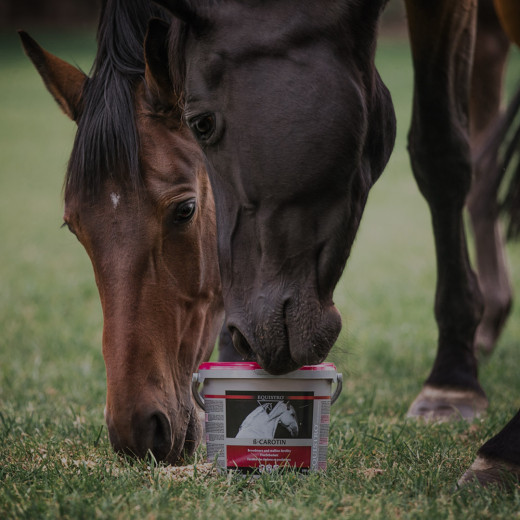
Feeding requirements of breeding horses
Breeding stallions
Popular thoroughbred stallions breed more than 150 mares in a season; stallions used in artificial insemination programs may mount a phantom once a day or 3-4 times per week.
A body condition score (BCS) of around 5 from 9 should be aimed for breeding stallions.
Energy requirements of active breeding stallions are substantially above maintenance requirements (20-40% above average maintenance) while the intake of protein (focus on lysine and methionine), vitamins & minerals can be adapted moderately depending on the level of activity (sum of breeding frequency, overall exercise).
The sperm quality plays a key role in estimating the stallions’ fertility. Sperm quality (motility, morphology, vitality) seems to be positively influenceable by adding Vitamin A, C, E, and selenium in cases the requirements are not matched by the daily basal diet. Sub fertile stallions seem more likely to positively respond to dietary modifications and supplementation of existing deficiencies in their basic diet.
ß-carotene should always be provided in cases of low access to pasture and plays an important role in breeding (reduction of oxidative stress, essential for epithelial tissues functioning in reproductive organs, necessary for steroid production). ß-carotene can be transformed into vitamin A in the horse’s intestine – A three- to six-month supply of vitamin A can be stored in the equine liver. As synthetic forms of beta-carotene are not easily absorbed by horses, supplementing beta-carotene in combination with vitamin A can be beneficial when needs are increased.
Zinc should be supplemented in horses who receive a diet rich in cereals (phytic acid can accumulated zinc in the lumen of the intestine and prevent the absorption of zinc) → essential for transformation of ß-carotene into vitamin A.
Broodmares
Preparation for pregnancy
- Mares with BCS between 5-6 will generally have higher conception rates (fat mares do not appear to have reduced reproductive efficiency in comparison to thin mares)
- Initial assessment of BCS in mares intended for breeding should be done 3 months prior to the onset of breeding (allows dietary adjustments in a manner to avoid digestive disturbance)
- The amount of digestible energy should be supplied slightly above the corresponding maintenance requirement [13-17 Mcal (55-70 MJ) per 500-600kg body weight]
- Crude protein intake should be increased by up to 20% maximum compared to maintenance requirements (320-360g per kg body weight), paying particular attention to the adequate supply of the amino acids lysine and methionine
- Deficiencies of vitamins A & E can reduce fertility prospects. For increased vitality of the ovaries (especially 6 weeks before insemination), both vitamins in addition to ß-carotene should be added to the basal diet as they can have positive effects on overall fertility
Pregnancy in the first and second trimester
- In the first 8 weeks after insemination, the embryo is not implanted in the uterus and therefore very sensitive to bottlenecks in the mare's food supply. For this reason, energy and nutrient intake must remain unchanged for 8 weeks after insemination to minimize possible undersupply and thus the risk of early abortion
- On the other hand, in early pregnancy in non-lactating mares, the risk of energy oversupply can lead to the occurrence and maintenance of a twin pregnancy, which in most cases ends in the 8th-11th week of gestation in a loss of both fetuses
- Since during early pregnancy fetal growth is quite low, it is sufficient to maintain the basal diet at the beginning of gestation and during the second trimester (after the critical phase of early pregnancy is over) with special attention to energy supply depending on the BCS of the mare and supplementing vitamins A, E and ß-carotene if necessary (deficiency in forage and concentrate feeding)
Pregnancy in the third trimester
- Gestational weight gain is expected to be 10-16% of the mares’ initial body weight (fetus and placental tissues) most of which is generated with the beginning of the 5th month of gestation (organogenesis)
- The requirement for digestible energy increases 1.2-1.5 times above the maintenance requirement in the last two months of gestation
- The total protein requirement increases by 1.3-2 times the maintenance requirement in the last two months of gestation
- An undersupply of calcium and sodium must be avoided to prevent low birth weights and to positively influence the intestinal activity of mare and foal (colic prevention)
- In case of deficiency of copper, selenium, iron and iodine, they must be supplemented as a deficiency affects the development of the fetus and its vitality
Lactating mares
- Requirements of lactating mares for energy and protein are estimated to be 10% higher than the same requirements for adult horses of the same body weight performing light work
- A low calcium diet will increase bone demineralization in lactating mares, but supplementing calcium and phosphorus above recommended levels does not mitigate apparent demineralization
- Supplementation of Vitamin A & E as well as ß-carotene can increase levels of these substances in the colostrum and are suspicious to support the presence of IgM and IgG antibodies (Vit. E) in the mares 'milk (day 3 p.p.) and strengthening the naive immune system
Foals
Newborn foals consume 15-25% of their body weight in milk per day within their first week of life.
As the content of vitamin A, iron, copper and zinc in the mare's milk decreases after birth within the first two weeks of life, a supplementation of the foal is necessary especially with limited access to pasture for the mare.
At birth, the normal growing horse is about 10% of its eventual mature body weight and grows to approximately 30% of its mature weight by 3 months of age. During the first two years of growth, high priority should be given to nutritional support of bone and cartilage development (Ca:P ratio and Cu:Zn ratio) to prevent limb malformation. High quality protein sources may be of benefit in young growing horses because of their capability to reduce the total amount of dietary crude protein required due to amino acid composition closer to that of developing tissues.
As foals have no microbial colonization of their hindgut, they are eating their mothers' feces (coprophagy) to colonize their hind gut and get the necessary intake of essential B-vitamins (as they cannot absorb them via their large intestine wall due the absence of gut bacteria). In cases of diarrhea, the supplementation of B-vitamins can support the foal especially if it refuses to eat.
Dr. med. vet. Caroline Fritz
